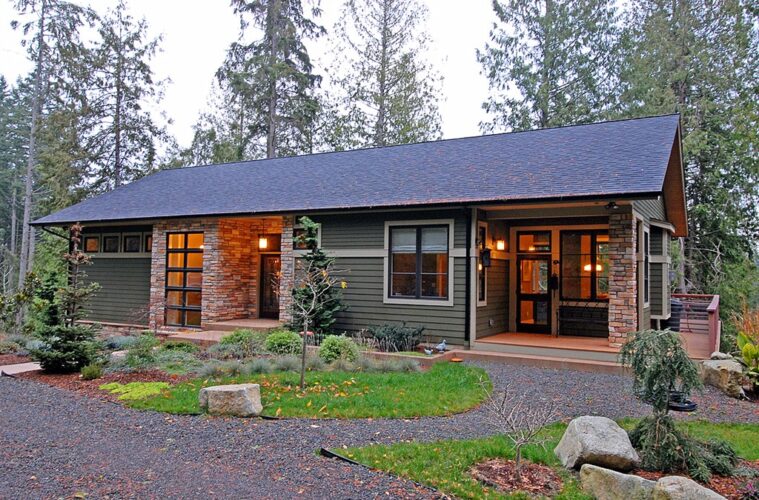

Energy-efficient homes are rapidly gaining popularity, and for good reason. They offer a powerful combination of environmental benefits and substantial financial savings. This article delves into the various facets of building energy-efficient homes, exploring practical strategies that homeowners can use to achieve significant cost reductions and a reduced carbon footprint. We will examine methods of improving energy efficiency through insulation, innovative designs, and smart technologies. Furthermore, we’ll investigate cost-effective solutions, discuss the impact on the environment, and provide a comprehensive guide to achieving energy-efficient home designs. This article is structured to guide you through the entire process, from initial planning to long-term maintenance.
Understanding the Importance of Energy-Efficient Homes
Defining Energy Efficiency in Homes
Energy-efficient homes are built to minimize energy consumption for heating, cooling, and other appliances. They’re designed to optimize resource use and minimize waste. Key principles include passive design, advanced insulation, and high-performance windows. This not only reduces operating costs but also minimizes the home’s environmental impact. This is achieved through a thoughtful combination of design strategies, innovative materials, and appropriate energy-saving technologies. The result is a comfortable, sustainable living space that aligns with environmental consciousness.
The Financial and Environmental Benefits
Energy-efficient homes offer clear financial advantages. Lower utility bills translate directly to significant savings over the lifetime of the home. These savings can accumulate over time to a substantial amount. Beyond the financial benefits, building energy-efficient homes contributes to a healthier environment. By reducing energy consumption, homeowners lessen their carbon footprint, contributing to the global effort to combat climate change. Energy-efficient homes are an investment in both the homeowner’s wallet and the health of our planet.
Designing for Energy Efficiency
Passive Design Strategies
Passive design strategies are crucial for reducing energy use in homes. Careful orientation of the house in relation to the sun’s path can significantly impact the amount of heat gained or lost. Large windows and strategically placed openings can maximize natural light and air circulation. Careful consideration of window placement, shading, and insulation, in addition to material selection, is crucial to achieving high levels of energy efficiency. By implementing these strategies, designers can drastically decrease the need for artificial heating or cooling.
Optimizing Insulation and Building Materials
High-quality insulation plays a critical role in energy efficiency. Proper insulation in walls, roofs, and floors dramatically reduces energy loss through conduction. Using appropriate materials for building components like doors, windows, walls, and roofs directly impacts heat transfer. Advanced insulating materials, such as cellulose or spray foam, can enhance the home’s thermal performance. A thorough understanding of building materials and their insulation properties is key for homeowners looking to maximize the energy efficiency of their new builds or retrofits.
Implementing Green Technologies
Smart Home Technologies for Efficiency
Smart technologies offer sophisticated ways to monitor and optimize energy consumption in a home. Smart thermostats can adjust temperatures based on occupancy and external conditions. Energy-monitoring systems can display energy usage in real-time, enabling homeowners to pinpoint areas for improvement. Using lighting control systems, you can further customize energy use based on user needs and activity. Integrate renewable energy resources such as solar panels to reduce reliance on fossil fuels and minimize environmental impact.
Integration of Renewable Energy Sources
Integrating renewable energy sources, such as solar panels, can significantly reduce dependence on the electricity grid. Solar panels generate clean energy and, depending on local incentives and policies, can significantly lower energy bills. This sustainable approach is becoming increasingly popular, reducing carbon emissions and promoting environmental responsibility.
Cost-Effective Strategies for Energy Efficiency
Budget-Friendly Home Improvement
Energy efficiency doesn’t always require large-scale renovations. Simple changes, like replacing old windows or weatherstripping doors and windows, can significantly decrease energy loss. Installing energy-efficient appliances and lighting fixtures can also lead to substantial savings over time. Consider energy-efficient light bulbs or LEDs, which consume less energy and provide the same, or better, light. Even minor upgrades can improve a home’s energy efficiency and save considerable costs.
Financing Options and Incentives
Many programs offer financial incentives and financing options for energy-efficient home improvements. Governmental incentives, such as tax credits or rebates, can help offset the costs. Financial assistance from utility companies can also ease the burden of upgrading to energy-efficient equipment and home designs.
Choosing Energy-Efficient Building Materials
Understanding Material Properties
Selecting materials with high insulation values significantly contributes to a home’s energy efficiency. Materials that can reduce heat transfer and limit air leakage play a crucial role. Understanding the thermal conductivity and insulation properties of various materials is key for homeowners and designers looking for high-performance builds. Consider the long-term cost-effectiveness and environmental impact when choosing materials.
Sustainable Building Practices
The utilization of sustainable building materials is becoming increasingly crucial for the construction of energy-efficient homes. By utilizing locally sourced, recycled, and sustainable materials, you minimize the environmental impact of construction. Use of recycled materials can often be cost-effective and promote a more circular economy, reducing waste.
In conclusion, building energy-efficient homes is not just about saving money; it’s about creating a sustainable future for generations to come. By implementing the strategies discussed in this article, homeowners can dramatically reduce their carbon footprint, save significantly on utility bills, and contribute to a healthier planet. Investing in energy efficiency now pays dividends in the long run, securing both economic and environmental benefits. Consider exploring further resources on green building practices to maximize your home’s efficiency and make a positive impact on the world around you.
